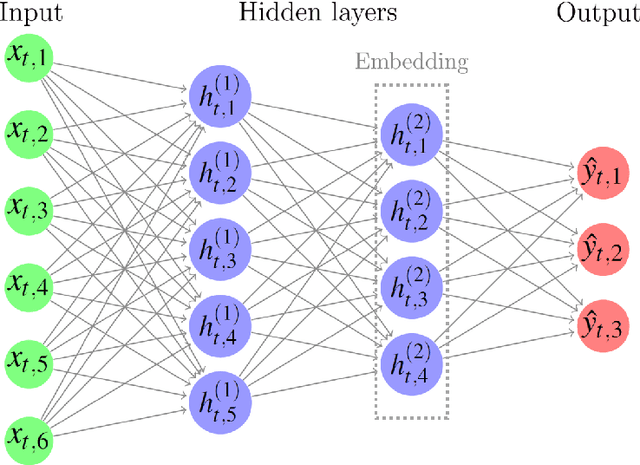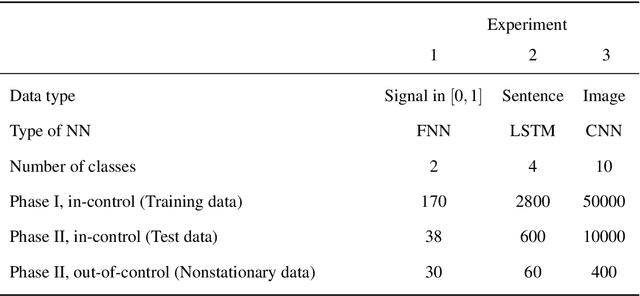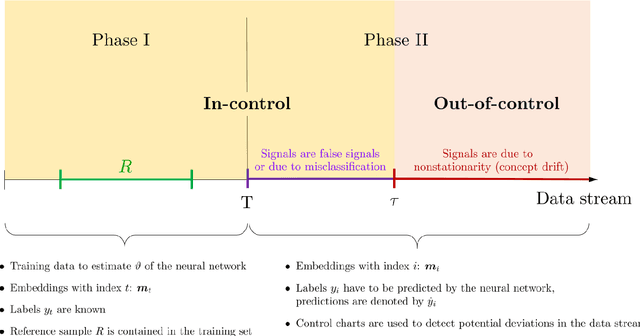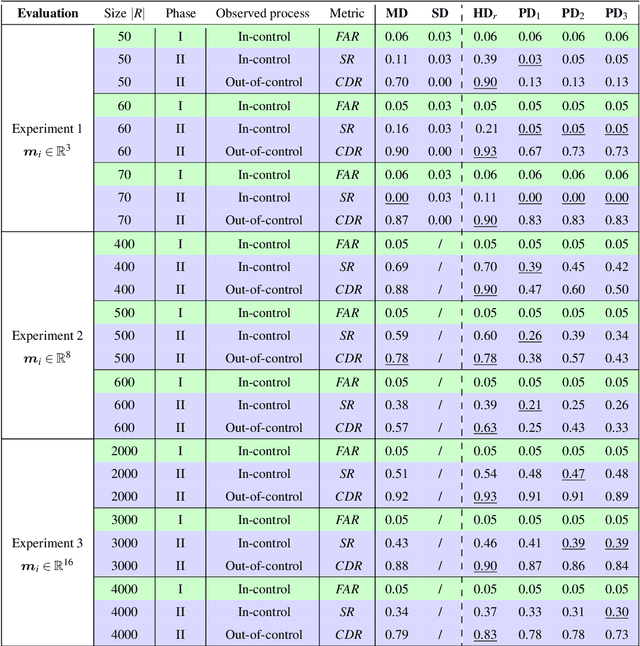Pavlo Mozharovskyi
AI-Driven Intrusion Detection Systems (IDS) on the ROAD dataset: A Comparative Analysis for automotive Controller Area Network (CAN)
Aug 30, 2024



Abstract:The integration of digital devices in modern vehicles has revolutionized automotive technology, enhancing safety and the overall driving experience. The Controller Area Network (CAN) bus is a central system for managing in-vehicle communication between the electronic control units (ECUs). However, the CAN protocol poses security challenges due to inherent vulnerabilities, lacking encryption and authentication, which, combined with an expanding attack surface, necessitates robust security measures. In response to this challenge, numerous Intrusion Detection Systems (IDS) have been developed and deployed. Nonetheless, an open, comprehensive, and realistic dataset to test the effectiveness of such IDSs remains absent in the existing literature. This paper addresses this gap by considering the latest ROAD dataset, containing stealthy and sophisticated injections. The methodology involves dataset labelling and the implementation of both state-of-the-art deep learning models and traditional machine learning models to show the discrepancy in performance between the datasets most commonly used in the literature and the ROAD dataset, a more realistic alternative.
Restyling Unsupervised Concept Based Interpretable Networks with Generative Models
Jul 01, 2024



Abstract:Developing inherently interpretable models for prediction has gained prominence in recent years. A subclass of these models, wherein the interpretable network relies on learning high-level concepts, are valued because of closeness of concept representations to human communication. However, the visualization and understanding of the learnt unsupervised dictionary of concepts encounters major limitations, specially for large-scale images. We propose here a novel method that relies on mapping the concept features to the latent space of a pretrained generative model. The use of a generative model enables high quality visualization, and naturally lays out an intuitive and interactive procedure for better interpretation of the learnt concepts. Furthermore, leveraging pretrained generative models has the additional advantage of making the training of the system more efficient. We quantitatively ascertain the efficacy of our method in terms of accuracy of the interpretable prediction network, fidelity of reconstruction, as well as faithfulness and consistency of learnt concepts. The experiments are conducted on multiple image recognition benchmarks for large-scale images. Project page available at https://jayneelparekh.github.io/VisCoIN_project_page/
Anomaly component analysis
Dec 26, 2023Abstract:At the crossway of machine learning and data analysis, anomaly detection aims at identifying observations that exhibit abnormal behaviour. Be it measurement errors, disease development, severe weather, production quality default(s) (items) or failed equipment, financial frauds or crisis events, their on-time identification and isolation constitute an important task in almost any area of industry and science. While a substantial body of literature is devoted to detection of anomalies, little attention is payed to their explanation. This is the case mostly due to intrinsically non-supervised nature of the task and non-robustness of the exploratory methods like principal component analysis (PCA). We introduce a new statistical tool dedicated for exploratory analysis of abnormal observations using data depth as a score. Anomaly component analysis (shortly ACA) is a method that searches a low-dimensional data representation that best visualises and explains anomalies. This low-dimensional representation not only allows to distinguish groups of anomalies better than the methods of the state of the art, but as well provides a -- linear in variables and thus easily interpretable -- explanation for anomalies. In a comparative simulation and real-data study, ACA also proves advantageous for anomaly analysis with respect to methods present in the literature.
Fast kernel half-space depth for data with non-convex supports
Dec 21, 2023Abstract:Data depth is a statistical function that generalizes order and quantiles to the multivariate setting and beyond, with applications spanning over descriptive and visual statistics, anomaly detection, testing, etc. The celebrated halfspace depth exploits data geometry via an optimization program to deliver properties of invariances, robustness, and non-parametricity. Nevertheless, it implicitly assumes convex data supports and requires exponential computational cost. To tackle distribution's multimodality, we extend the halfspace depth in a Reproducing Kernel Hilbert Space (RKHS). We show that the obtained depth is intuitive and establish its consistency with provable concentration bounds that allow for homogeneity testing. The proposed depth can be computed using manifold gradient making faster than halfspace depth by several orders of magnitude. The performance of our depth is demonstrated through numerical simulations as well as applications such as anomaly detection on real data and homogeneity testing.
Towards On-device Learning on the Edge: Ways to Select Neurons to Update under a Budget Constraint
Dec 08, 2023



Abstract:In the realm of efficient on-device learning under extreme memory and computation constraints, a significant gap in successful approaches persists. Although considerable effort has been devoted to efficient inference, the main obstacle to efficient learning is the prohibitive cost of backpropagation. The resources required to compute gradients and update network parameters often exceed the limits of tightly constrained memory budgets. This paper challenges conventional wisdom and proposes a series of experiments that reveal the existence of superior sub-networks. Furthermore, we hint at the potential for substantial gains through a dynamic neuron selection strategy when fine-tuning a target task. Our efforts extend to the adaptation of a recent dynamic neuron selection strategy pioneered by Bragagnolo et al. (NEq), revealing its effectiveness in the most stringent scenarios. Our experiments demonstrate, in the average case, the superiority of a NEq-inspired approach over a random selection. This observation prompts a compelling avenue for further exploration in the area, highlighting the opportunity to design a new class of algorithms designed to facilitate parameter update selection. Our findings usher in a new era of possibilities in the field of on-device learning under extreme constraints and encourage the pursuit of innovative strategies for efficient, resource-friendly model fine-tuning.
Tailoring Mixup to Data using Kernel Warping functions
Nov 02, 2023



Abstract:Data augmentation is an essential building block for learning efficient deep learning models. Among all augmentation techniques proposed so far, linear interpolation of training data points, also called mixup, has found to be effective for a large panel of applications. While the majority of works have focused on selecting the right points to mix, or applying complex non-linear interpolation, we are interested in mixing similar points more frequently and strongly than less similar ones. To this end, we propose to dynamically change the underlying distribution of interpolation coefficients through warping functions, depending on the similarity between data points to combine. We define an efficient and flexible framework to do so without losing in diversity. We provide extensive experiments for classification and regression tasks, showing that our proposed method improves both performance and calibration of models. Code available in https://github.com/ENSTA-U2IS/torch-uncertainty
Tackling Interpretability in Audio Classification Networks with Non-negative Matrix Factorization
May 11, 2023Abstract:This paper tackles two major problem settings for interpretability of audio processing networks, post-hoc and by-design interpretation. For post-hoc interpretation, we aim to interpret decisions of a network in terms of high-level audio objects that are also listenable for the end-user. This is extended to present an inherently interpretable model with high performance. To this end, we propose a novel interpreter design that incorporates non-negative matrix factorization (NMF). In particular, an interpreter is trained to generate a regularized intermediate embedding from hidden layers of a target network, learnt as time-activations of a pre-learnt NMF dictionary. Our methodology allows us to generate intuitive audio-based interpretations that explicitly enhance parts of the input signal most relevant for a network's decision. We demonstrate our method's applicability on a variety of classification tasks, including multi-label data for real-world audio and music.
Optimized preprocessing and Tiny ML for Attention State Classification
Mar 20, 2023Abstract:In this paper, we present a new approach to mental state classification from EEG signals by combining signal processing techniques and machine learning (ML) algorithms. We evaluate the performance of the proposed method on a dataset of EEG recordings collected during a cognitive load task and compared it to other state-of-the-art methods. The results show that the proposed method achieves high accuracy in classifying mental states and outperforms state-of-the-art methods in terms of classification accuracy and computational efficiency.
Anomaly detection using data depth: multivariate case
Oct 06, 2022



Abstract:Anomaly detection is a branch of machine learning and data analysis which aims at identifying observations that exhibit abnormal behaviour. Be it measurement errors, disease development, severe weather, production quality default(s) (items) or failed equipment, financial frauds or crisis events, their on-time identification, isolation and explanation constitute an important task in almost any branch of industry and science. By providing a robust ordering, data depth -- statistical function that measures belongingness of any point of the space to a data set -- becomes a particularly useful tool for detection of anomalies. Already known for its theoretical properties, data depth has undergone substantial computational developments in the last decade and particularly recent years, which has made it applicable for contemporary-sized problems of data analysis and machine learning. In this article, data depth is studied as an efficient anomaly detection tool, assigning abnormality labels to observations with lower depth values, in a multivariate setting. Practical questions of necessity and reasonability of invariances and shape of the depth function, its robustness and computational complexity, choice of the threshold are discussed. Illustrations include use-cases that underline advantageous behaviour of data depth in various settings.
Statistical monitoring of models based on artificial intelligence
Sep 15, 2022



Abstract:The rapid advancement of models based on artificial intelligence demands innovative monitoring techniques which can operate in real time with low computational costs. In machine learning, especially if we consider neural network (NN) learning algorithms, and in particular deep-learning architectures, the models are often trained in a supervised manner. Consequently, the learned relationship between the input and the output must remain valid during the model's deployment. If this stationarity assumption holds, we can conclude that the NN generates accurate predictions. Otherwise, the retraining or rebuilding of the model is required. We propose to consider the latent feature representation of the data (called "embedding") generated by the NN for determining the time point when the data stream starts being nonstationary. To be precise, we monitor embeddings by applying multivariate control charts based on the calculation of the data depth and normalized ranks. The performance of the introduced method is evaluated using various NNs with different underlying data formats.
 Add to Chrome
Add to Chrome Add to Firefox
Add to Firefox Add to Edge
Add to Edge